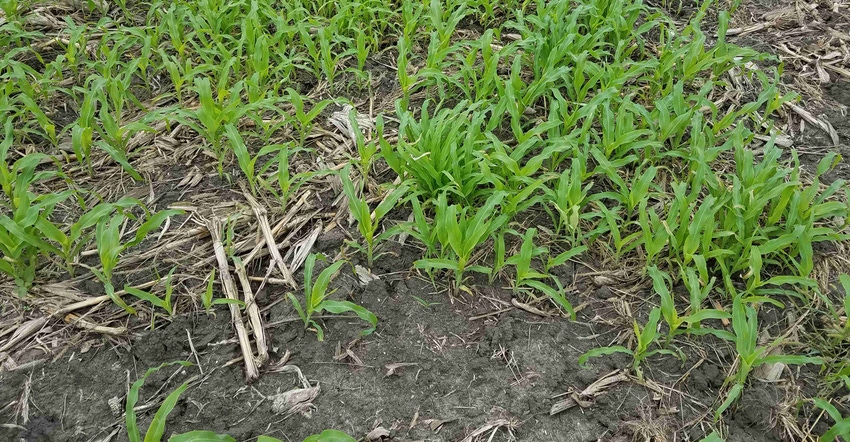
Quick drydown of corn in Indiana this fall caught some people off guard. Harvest losses are running much higher than normal in some fields. Gary Woodruff, regional manager for GSI, says if recent wet conditions continue through November, it could lower average harvested yield enough to threaten what appeared to be a potential record corn yield.
“The story of this fall harvest season in Indiana is that crops dried down quicker than people expected,” Woodruff says. “It’s also been a year where you could do moisture checks and then find when you ran the field that the moisture check was way off. For corn, usually if you do a moisture check and then combine part of the field, the moisture is slightly wetter than the check. This year it was the opposite. In some cases, the actual harvest moisture turned out to be dramatically lower than the check sample.”
In fact, some people took checks that tested, say, 28%, only to run a portion of the field and find it closer to 20%. While that sounds like a good thing, it has a downside, Woodruff says. Some fields slipped past the ideal moisture window for harvesting maximum yield before the grower even realized it.
“Many experts talk about harvesting at 21% to 23% moisture to obtain maximum yield,” he notes. “If it gets below 21%, harvest losses can increase dramatically. Kernels shell off at the corn head when the moisture content is too low.”
Losses mount
Some people hesitate beginning corn harvest at 28% to 30% because they don’t want to pay extra drying costs. Woodruff notes the flip side is that if corn becomes too dry, you can lose far more — you just don’t get a bill for it, so you don’t see the cost.
This year, however, with unseasonably warm, moist weather in early October, many people are seeing what they left behind — it’s sprouting as volunteer corn.
“Maybe people aren’t paying as much attention to doing harvest loss checks as they once did,” Woodruff says. “Ag engineers have explained for years how to check for losses. It’s not new.”
According to Woodruff, if corn comes out of the field at 20% moisture, harvest losses, largely due to shelling at the head but including invisible and other losses, can amount to 7.6%, based on university studies. At 17% moisture, that can rise to 12.3% loss. If corn comes out at 15%, you can suffer losses as large as 15% or higher if the crop goes down.
If you had 200-bushel-per-acre corn and lose 10% to harvest loss, you harvest 180 bushels per acre. Even at $3 per bushel corn, that’s a $60 loss per acre. That would have paid for a lot of fuel to start harvesting earlier and dry grain, Woodruff says.
“We’re seeing a similar situation in soybeans in some areas,” he notes. “People would do moisture checks and think they weren’t mature. When they did run, they found beans were more mature and drier than they thought.”
Once soybeans get too dry, harvest losses from shattering during combining mount up, Woodruff says.
Other issues are also complicating harvest, including corn going down from diseases and storms, both farms and elevators running out of storage space, and ear rots in some fields.
“If you have mold issues coming out of the field, and you have a dryer where you can dry and cool, you can dry it to 13% and help yourself,” Woodruff says. “You won’t get rid of all of it, and it may turn black under the dryer as mold falls off, but it will help. Mark that corn for early sale.”
About the Author(s)
You May Also Like




